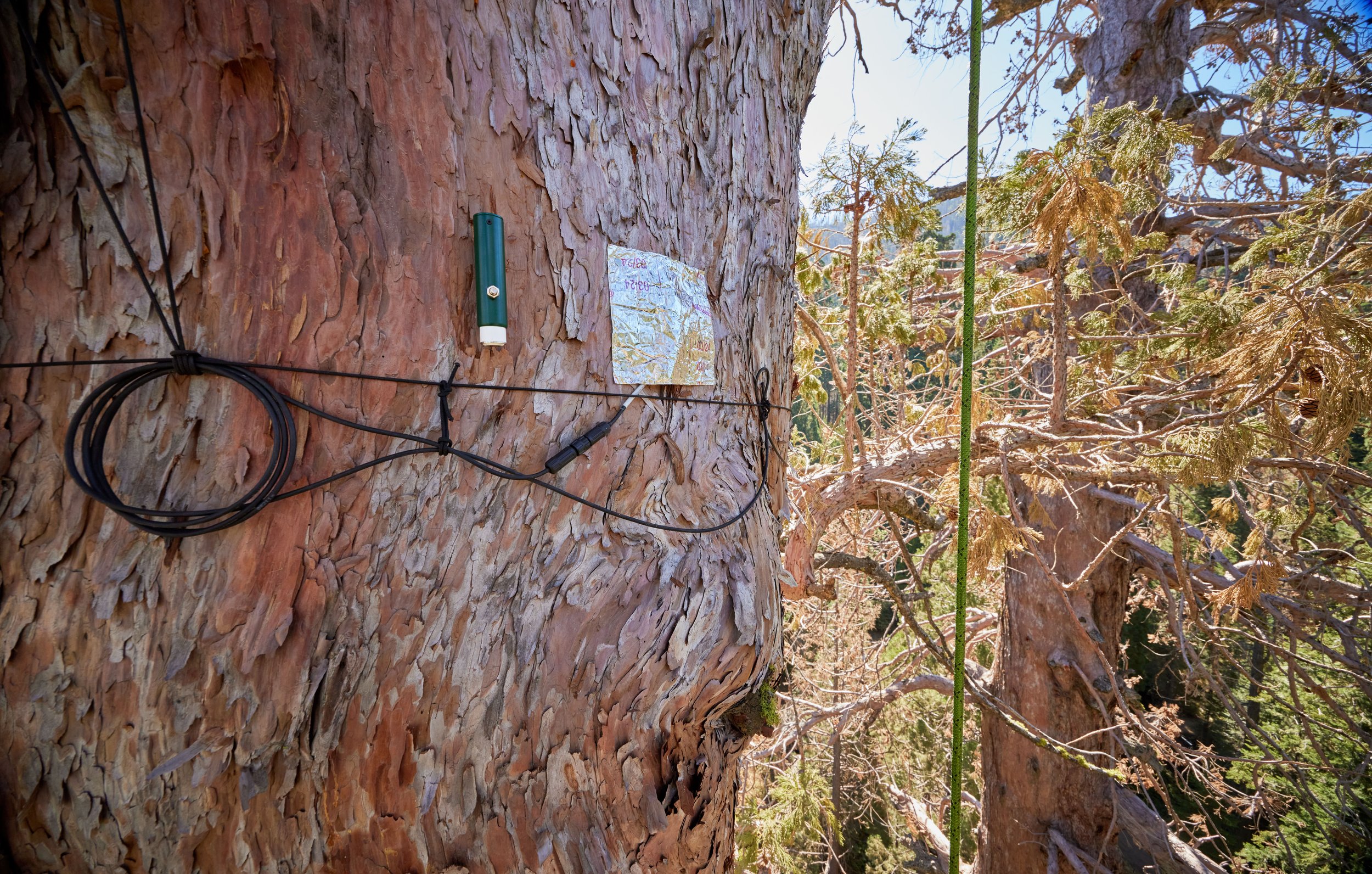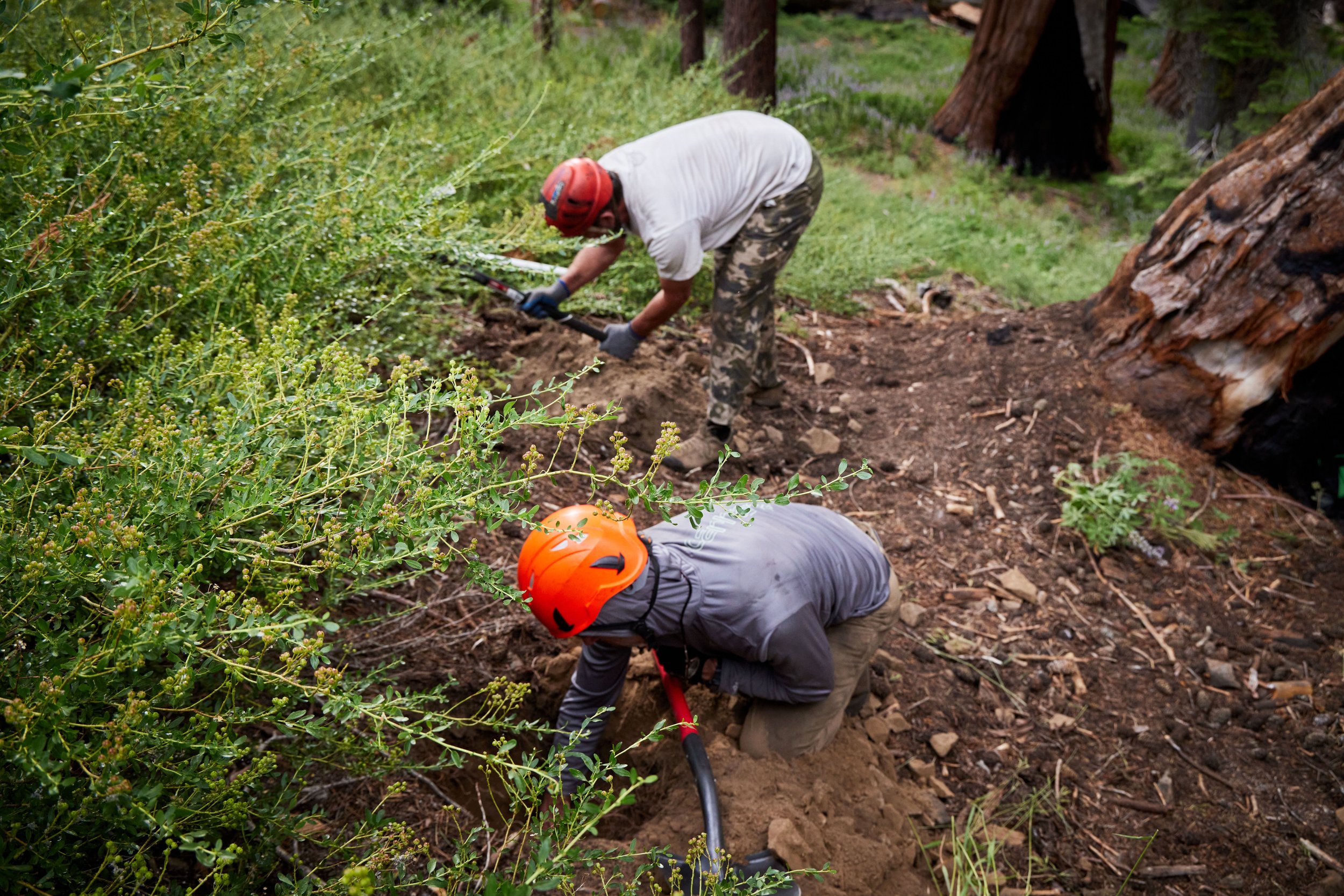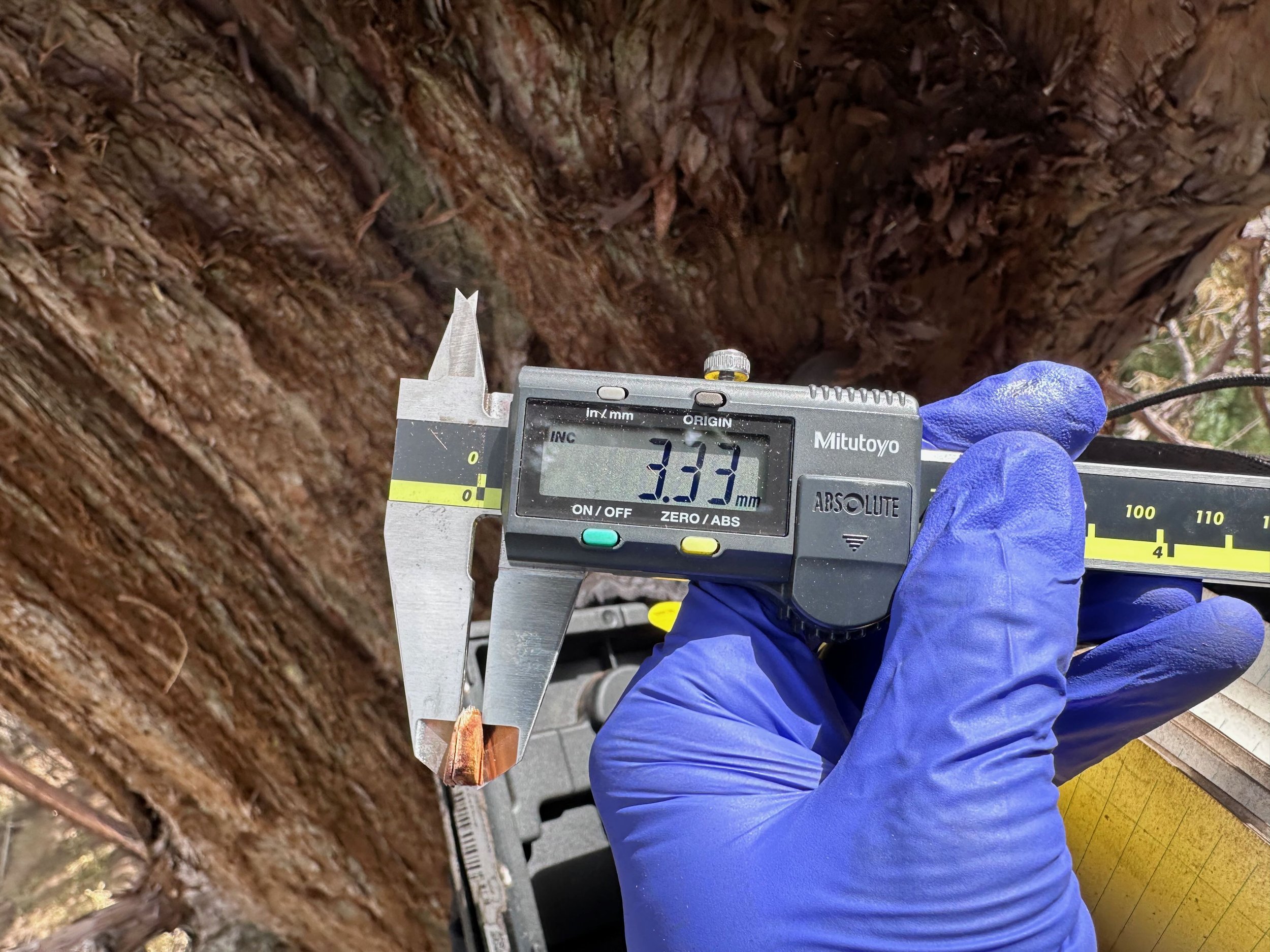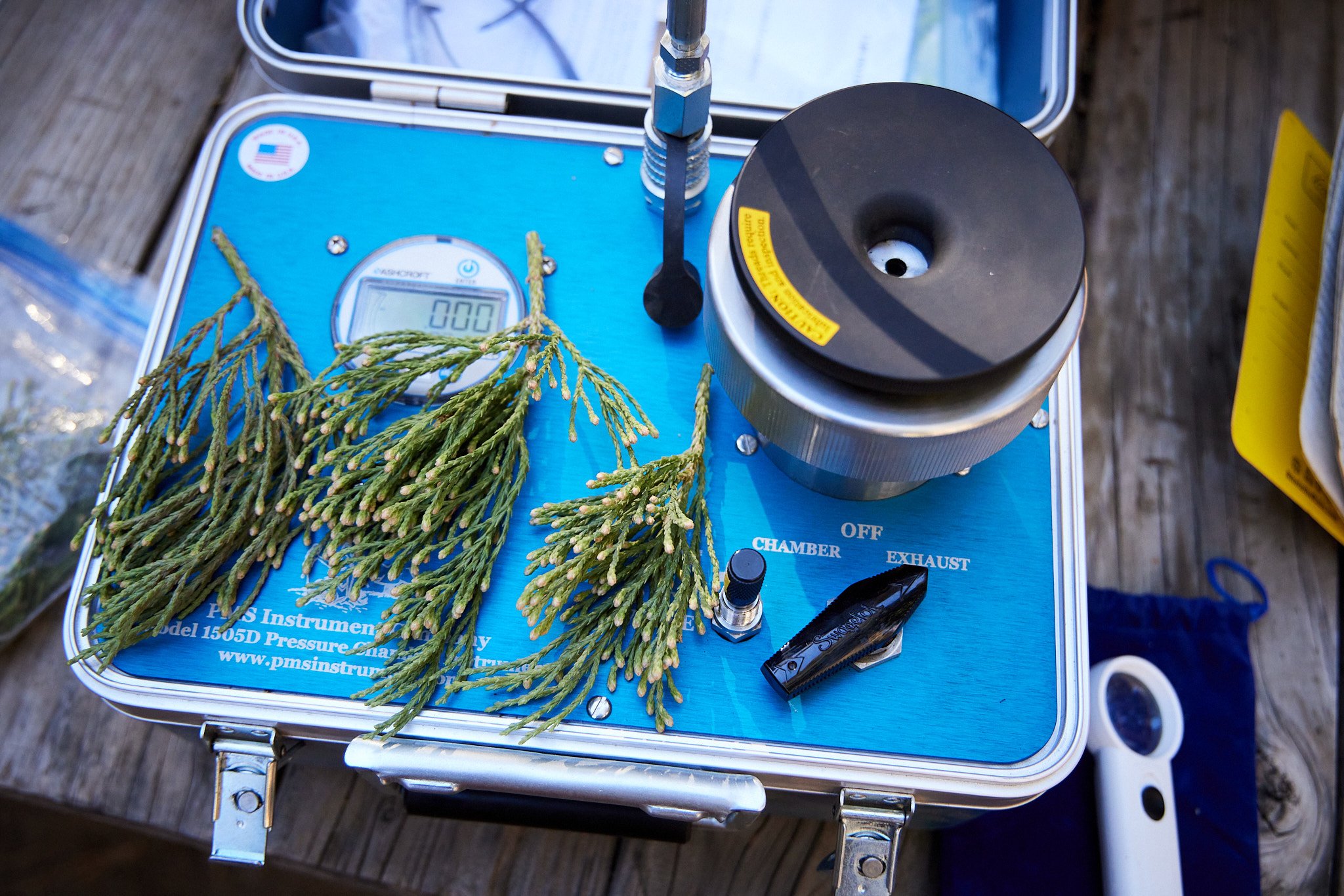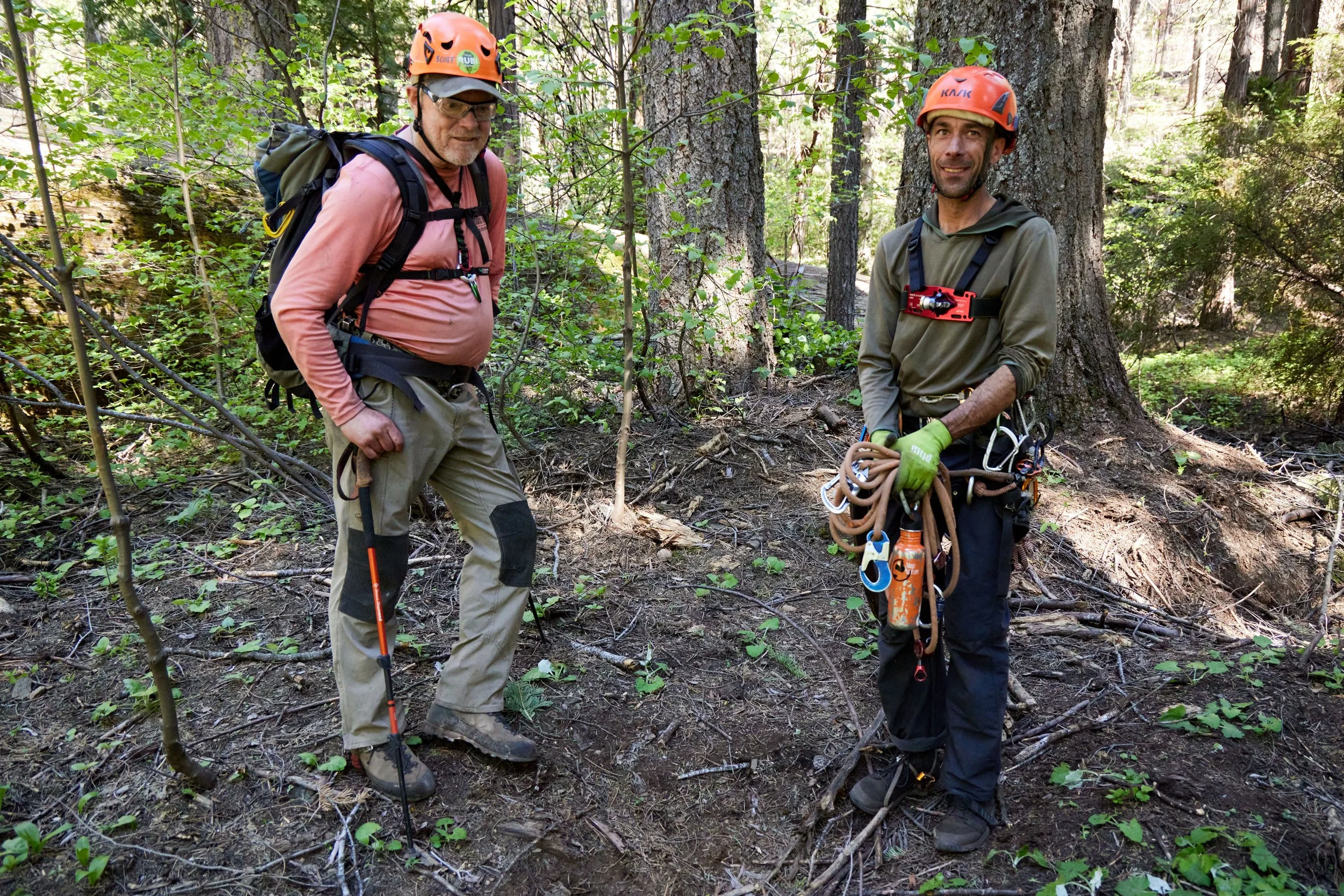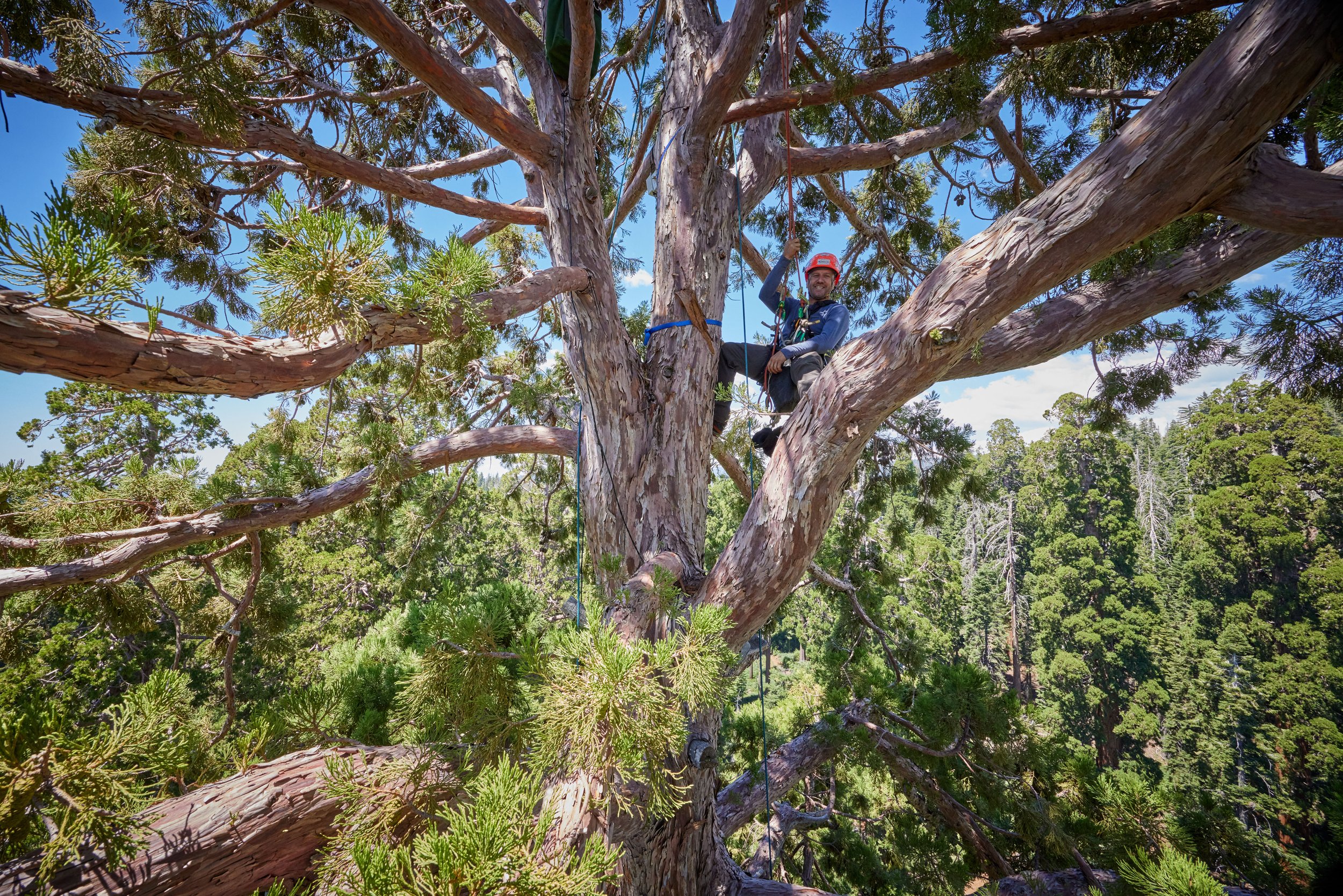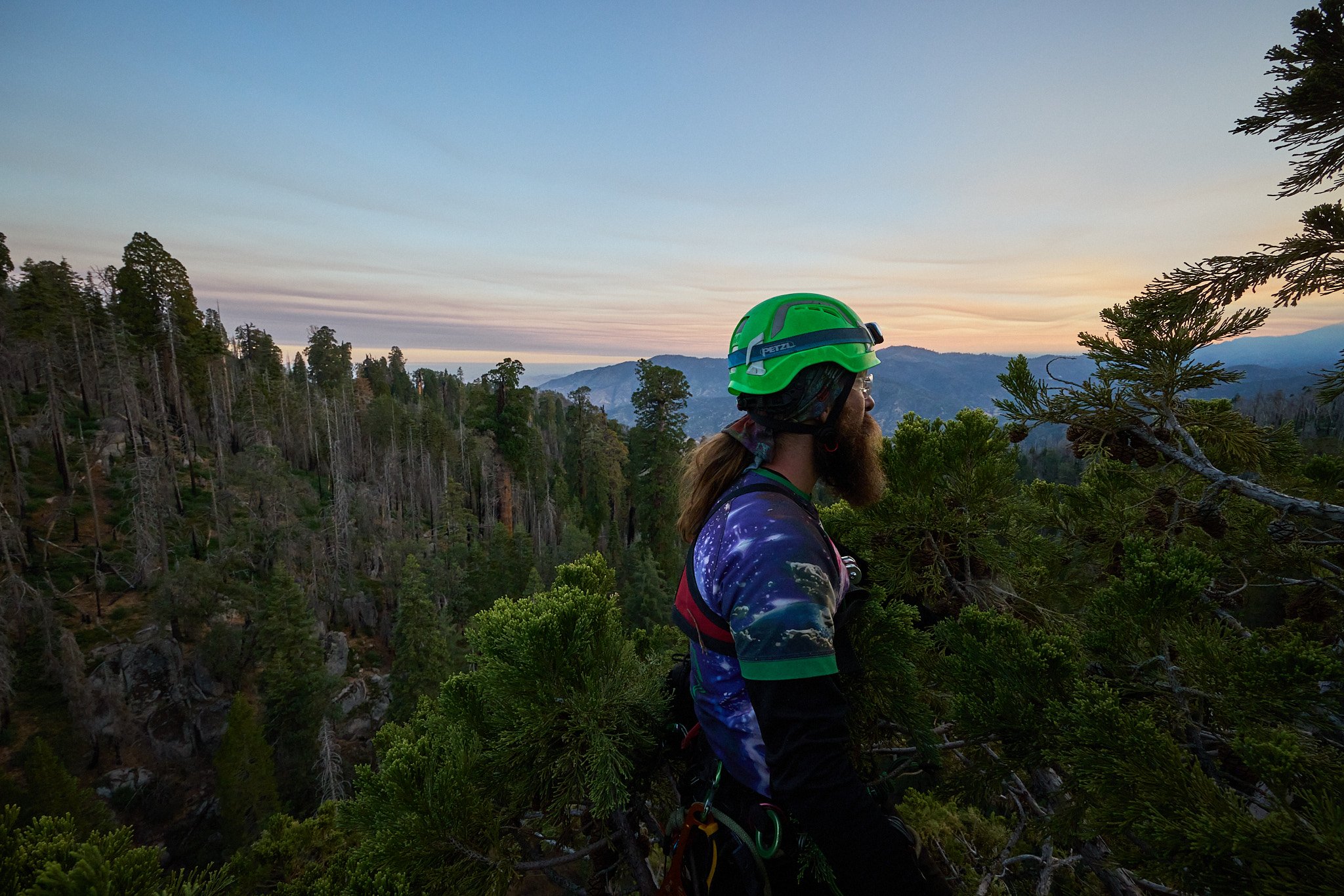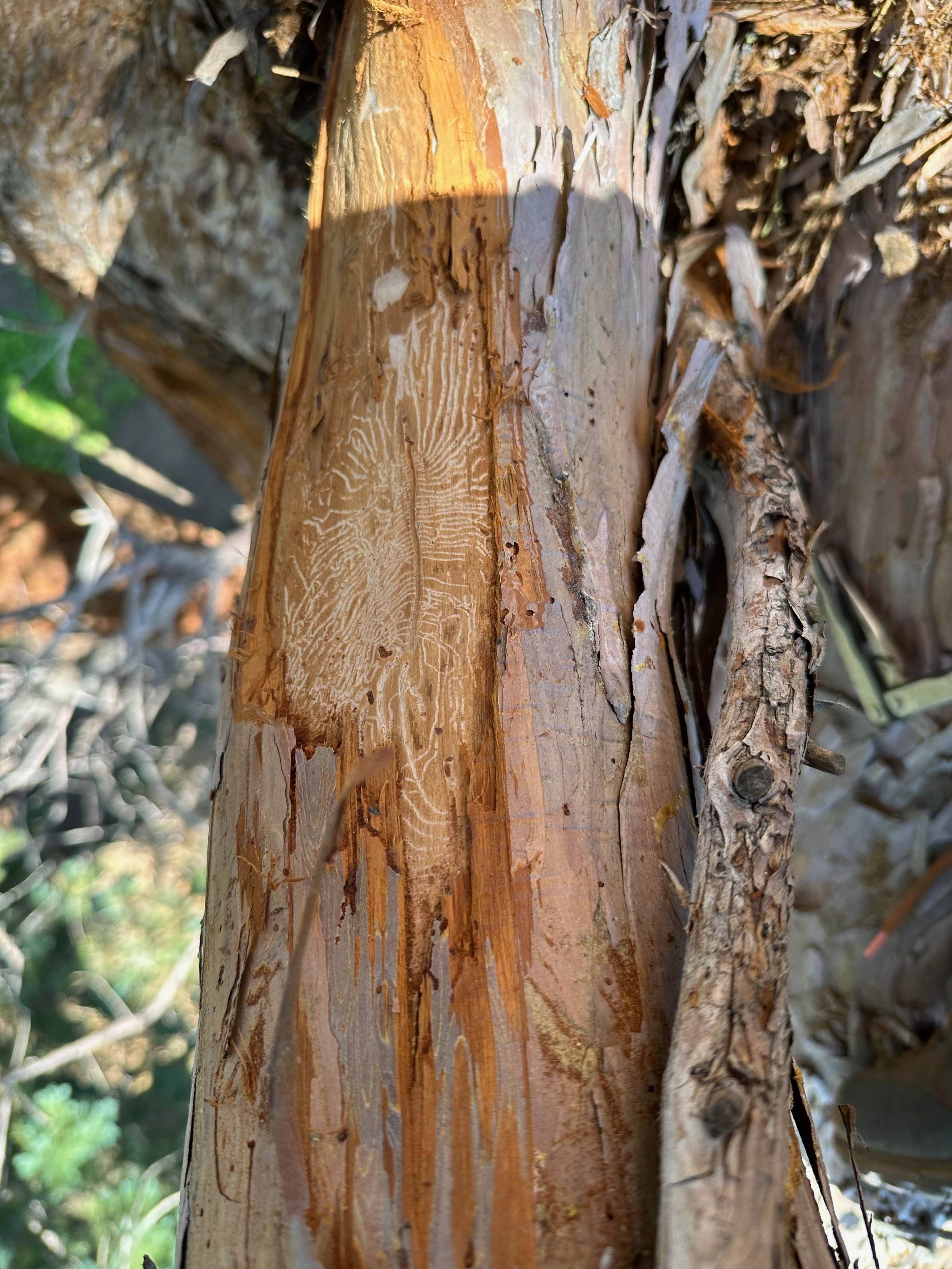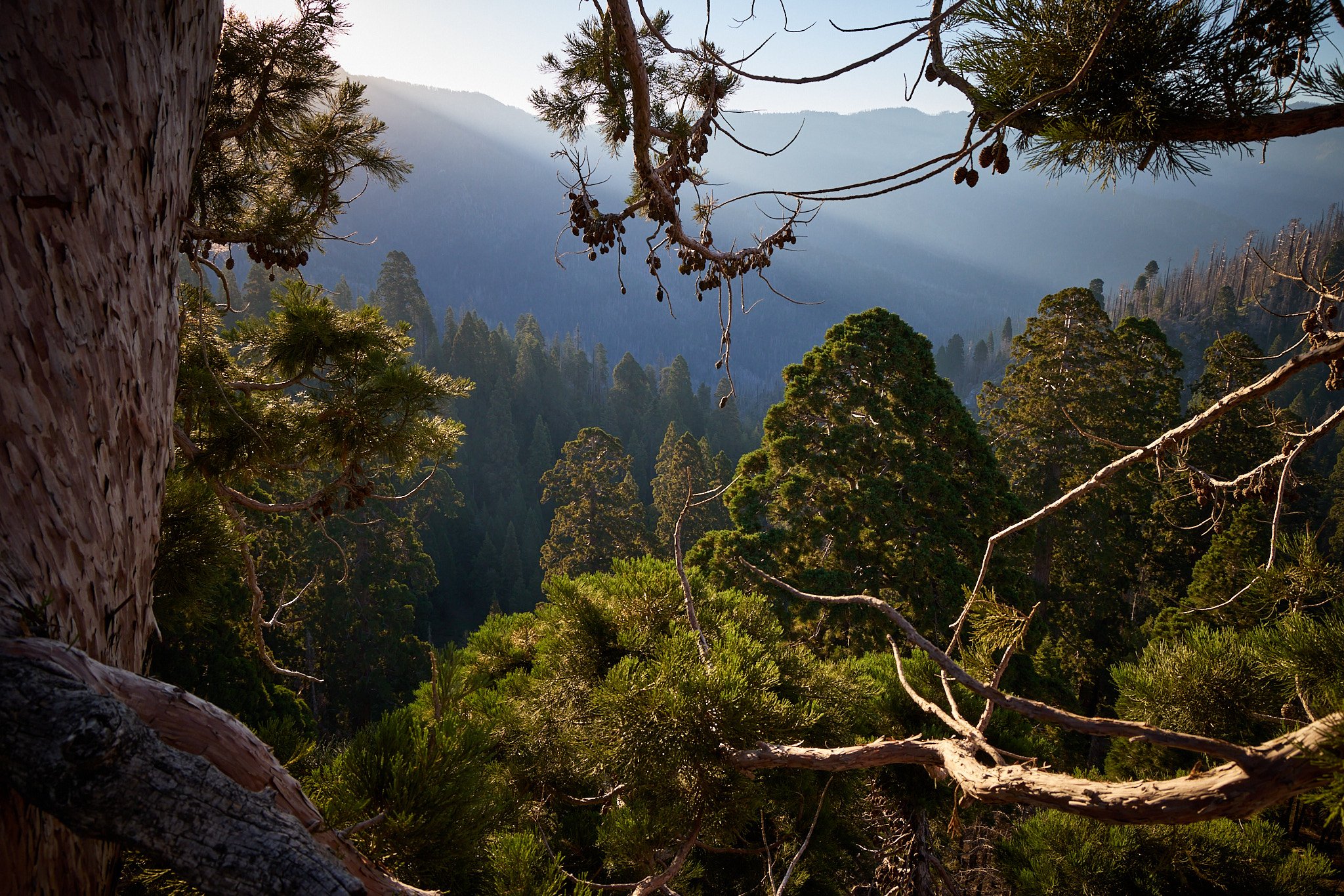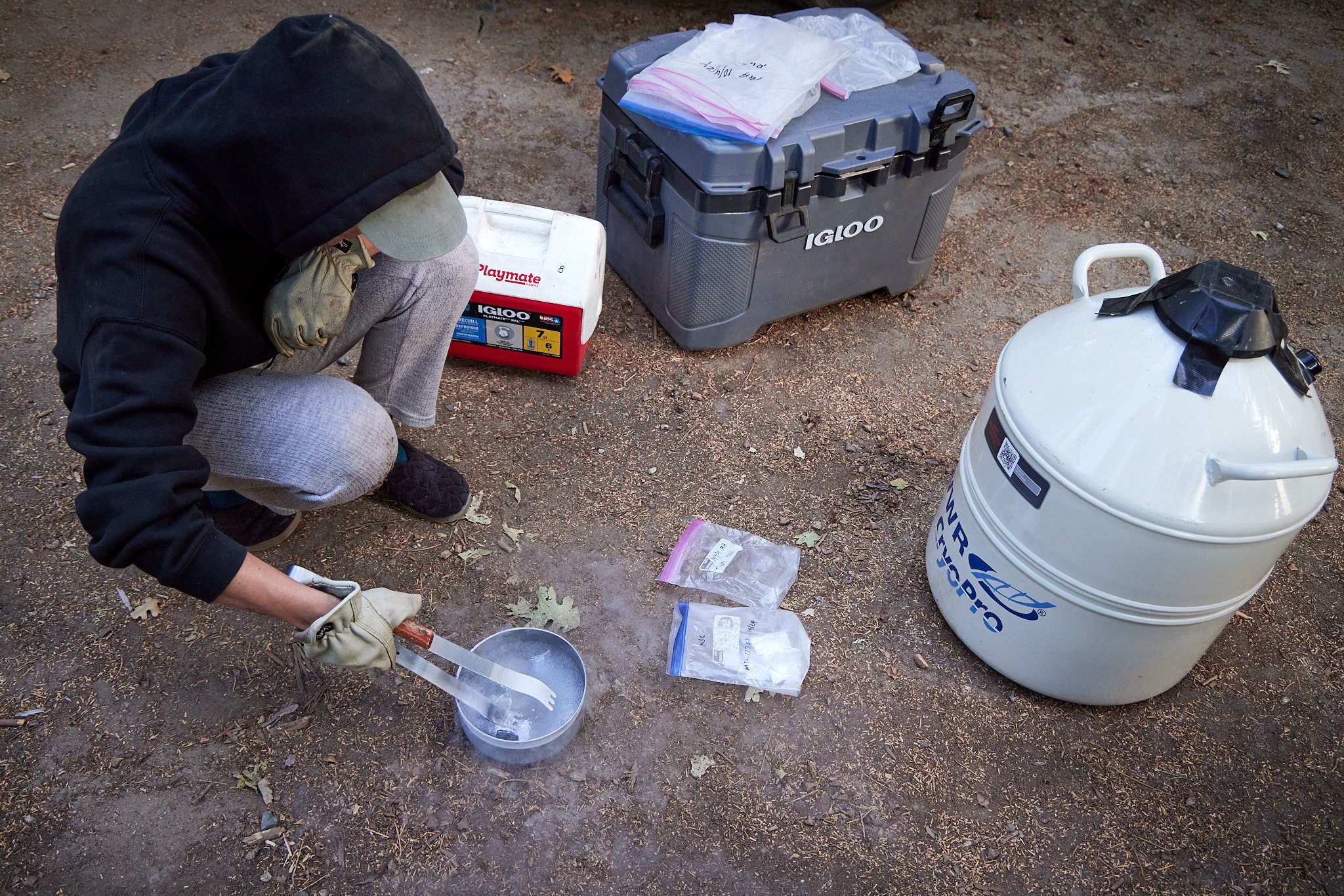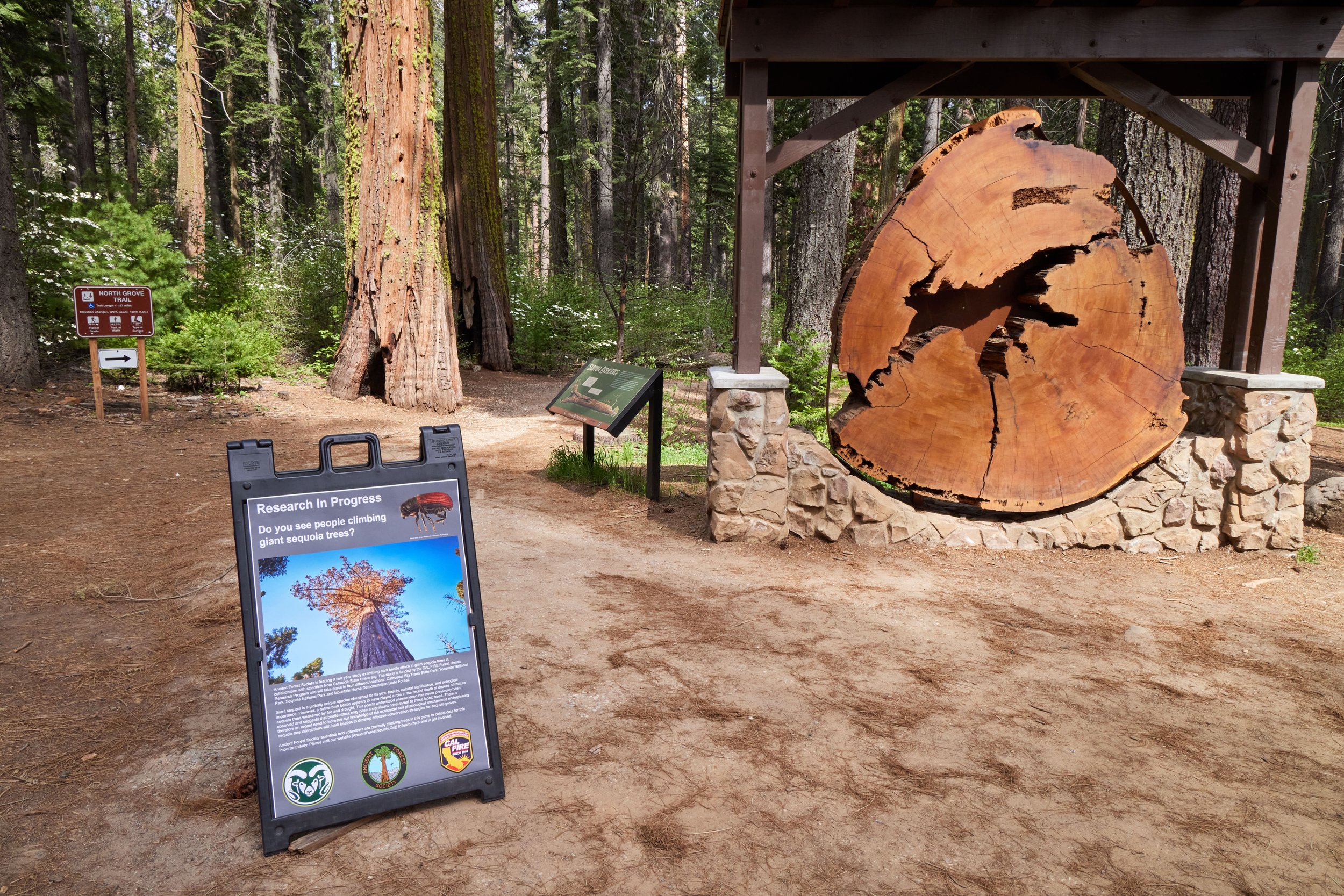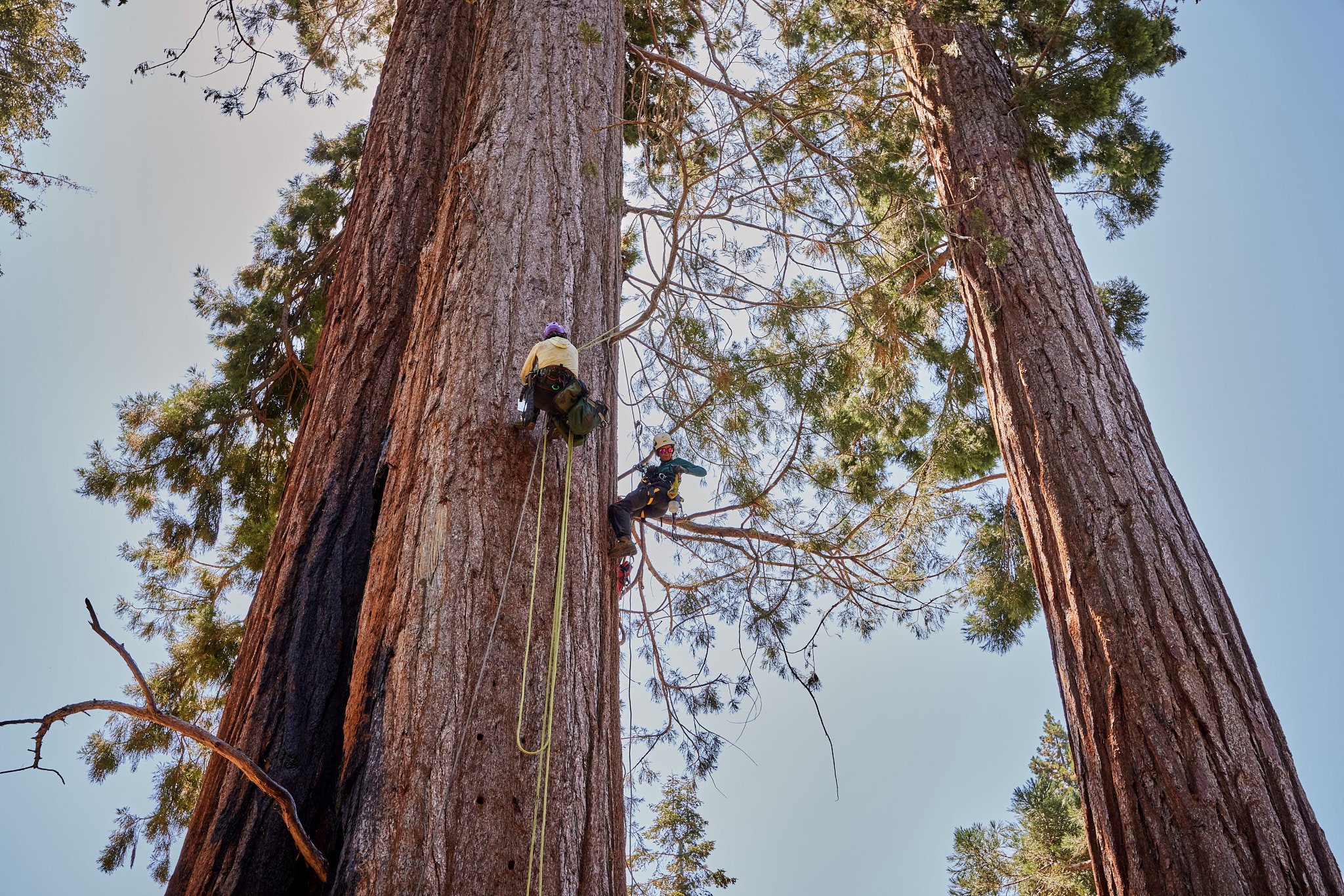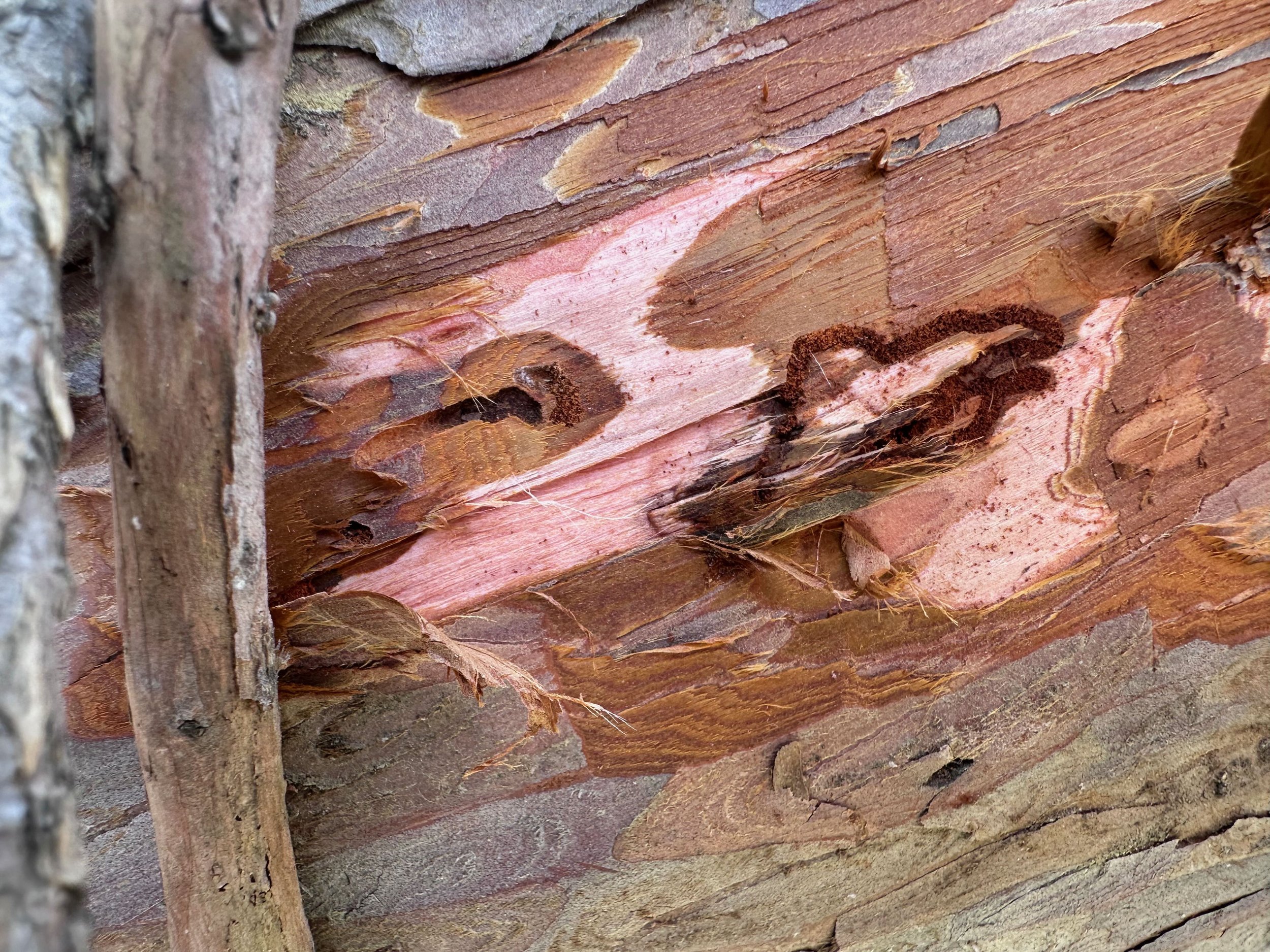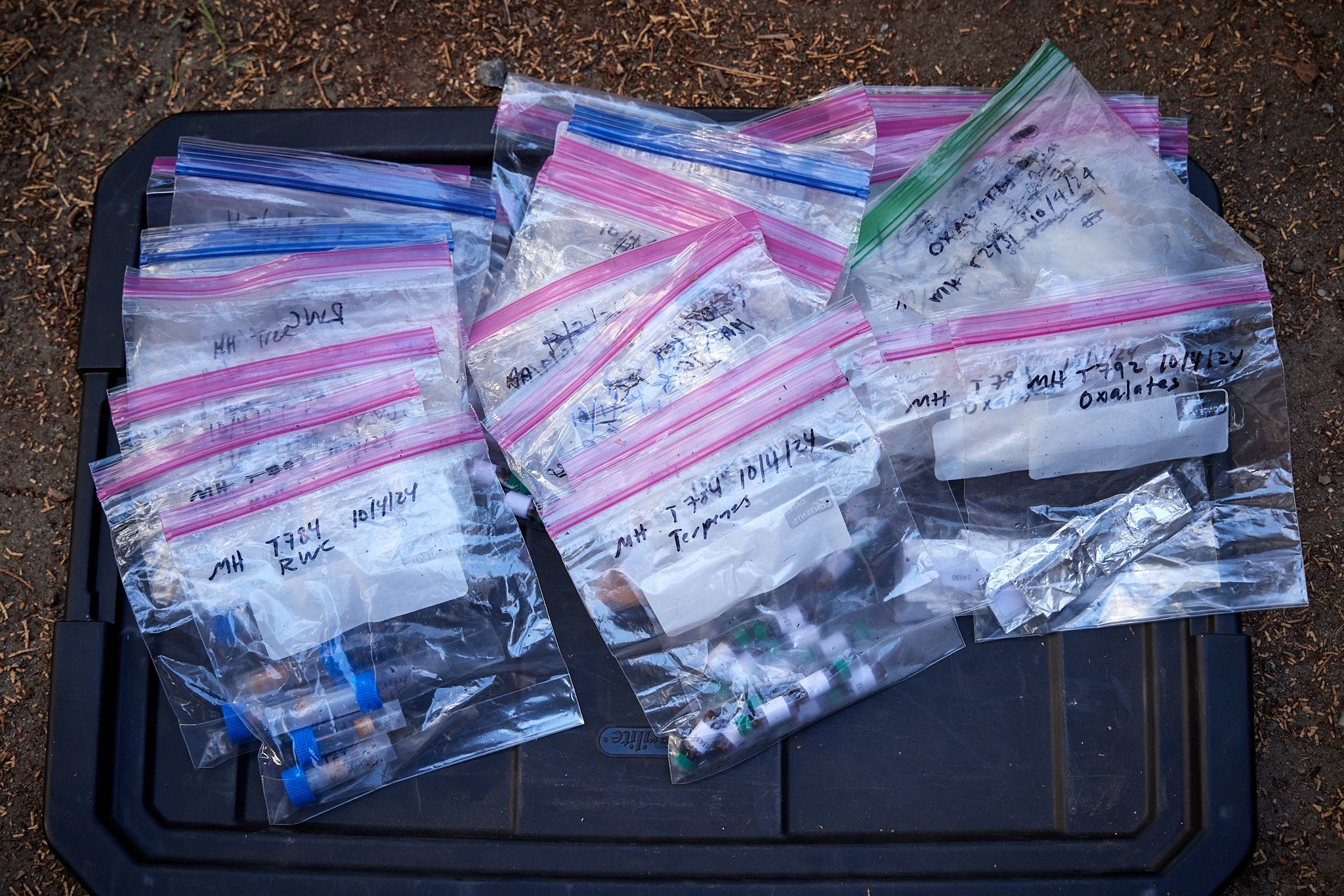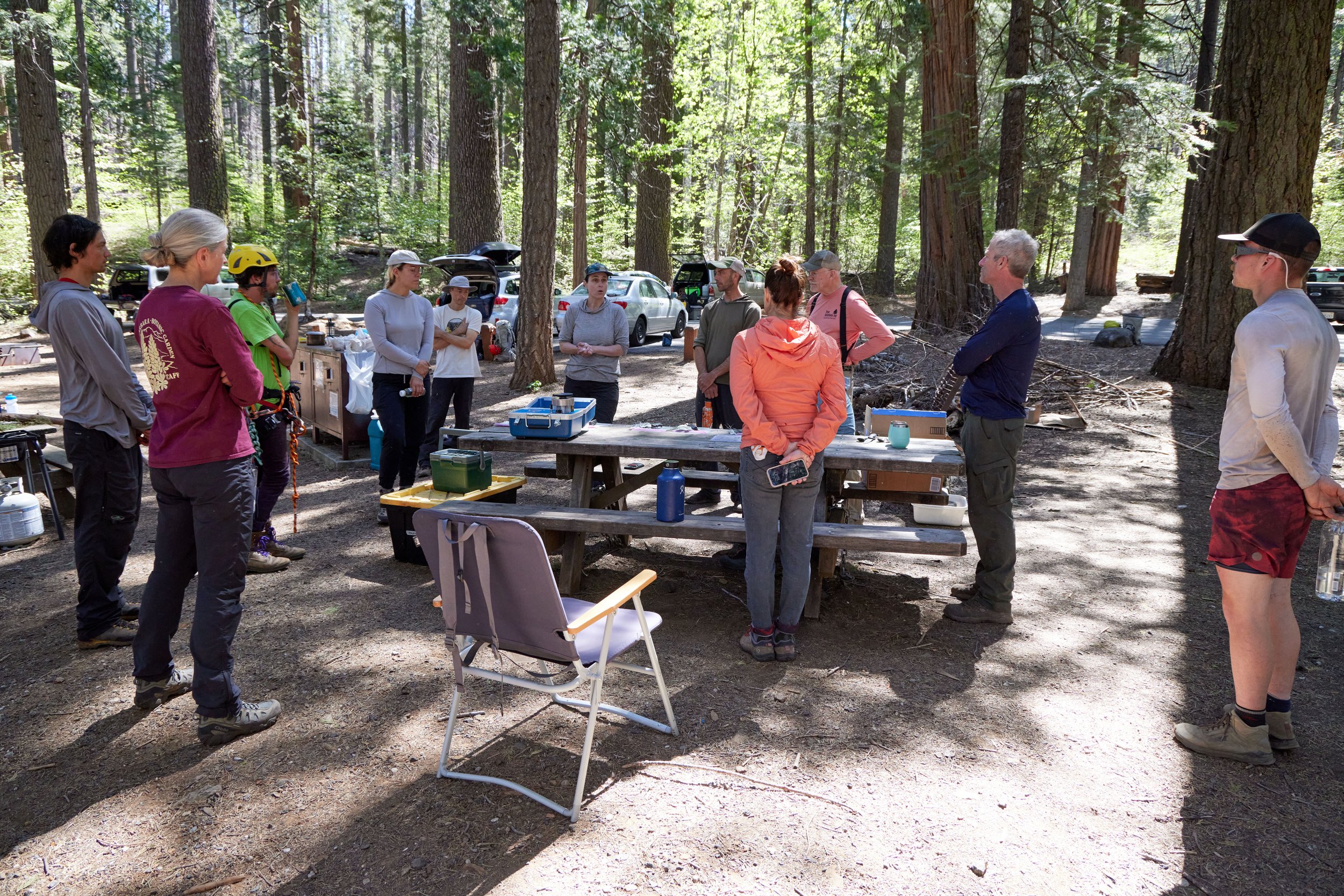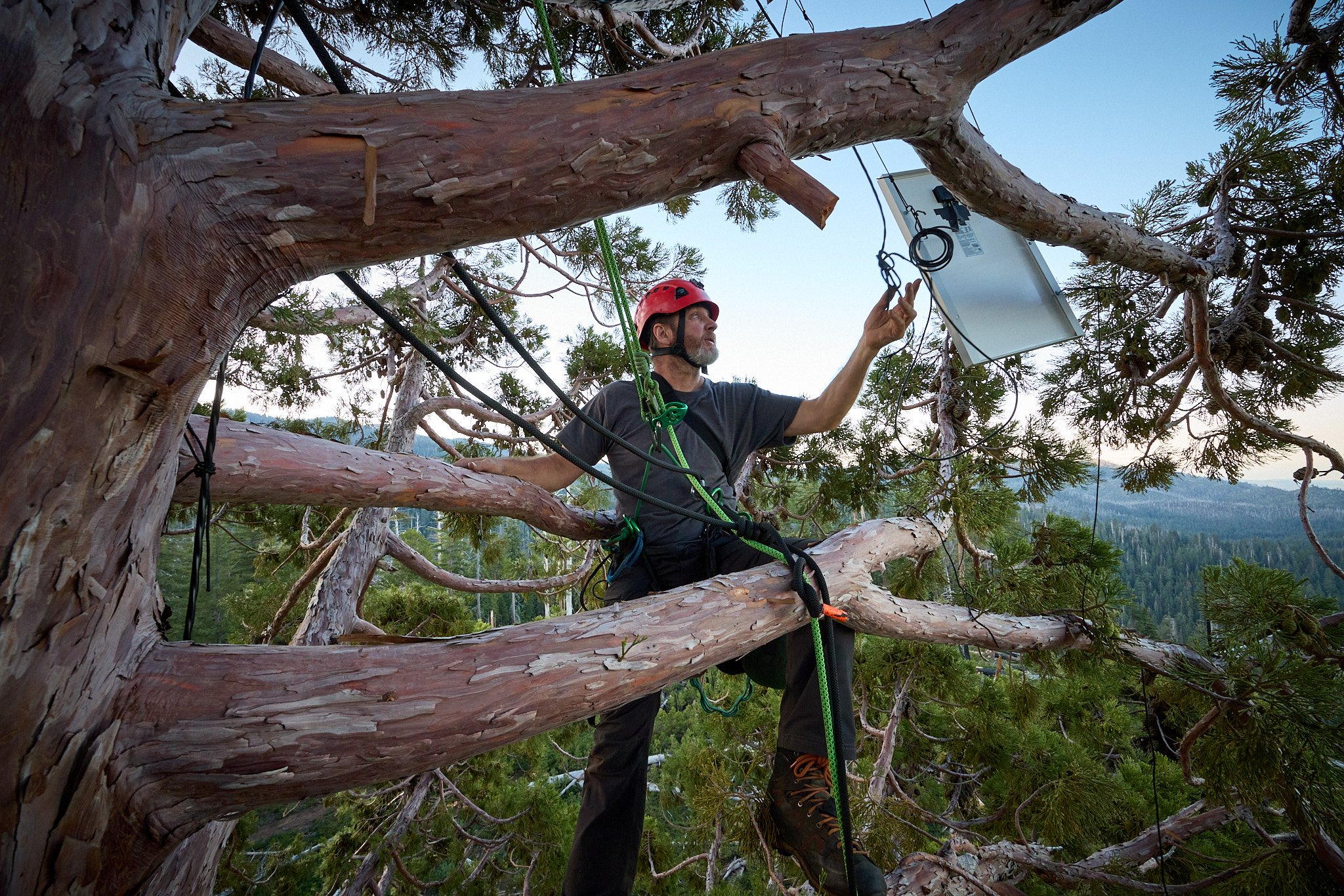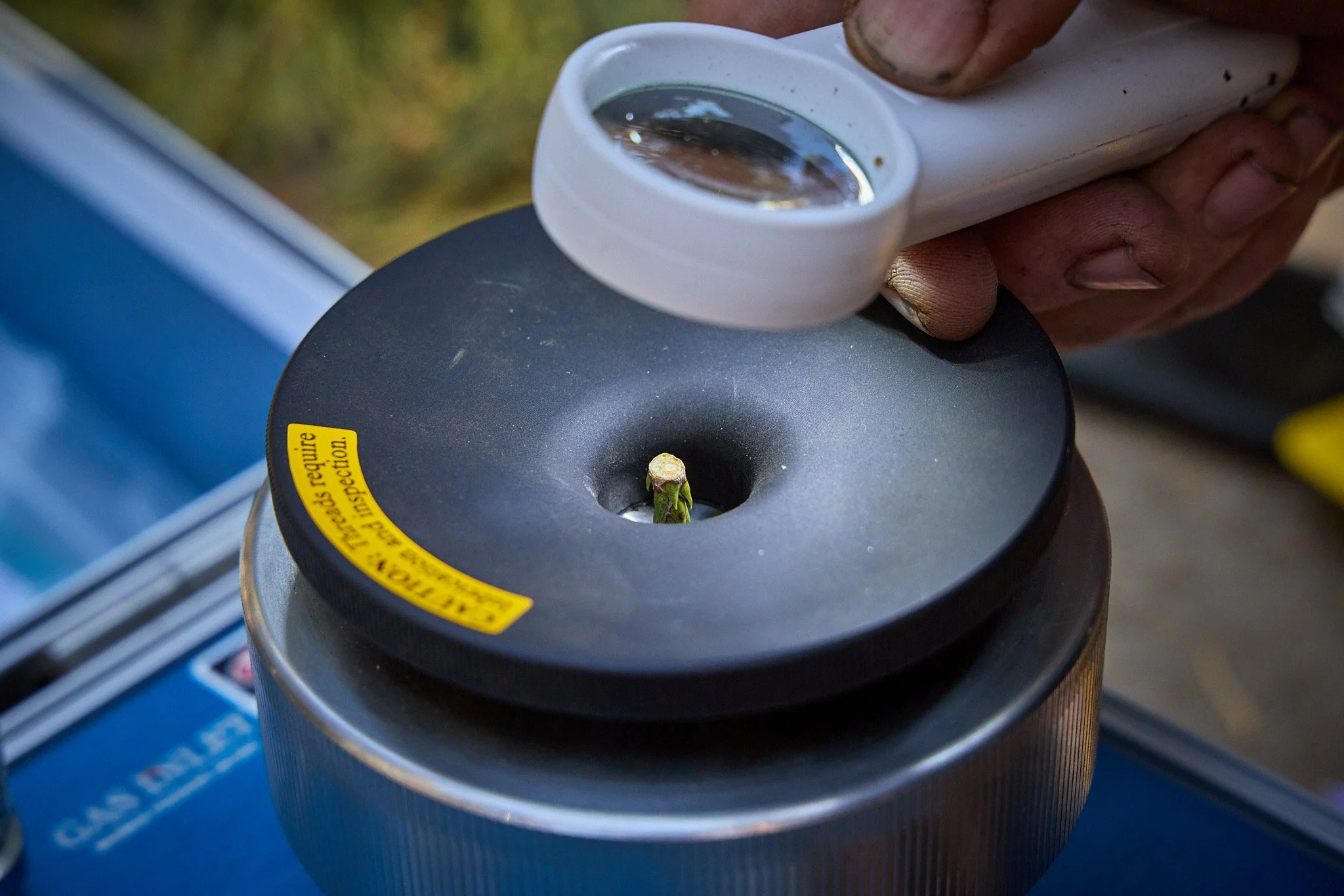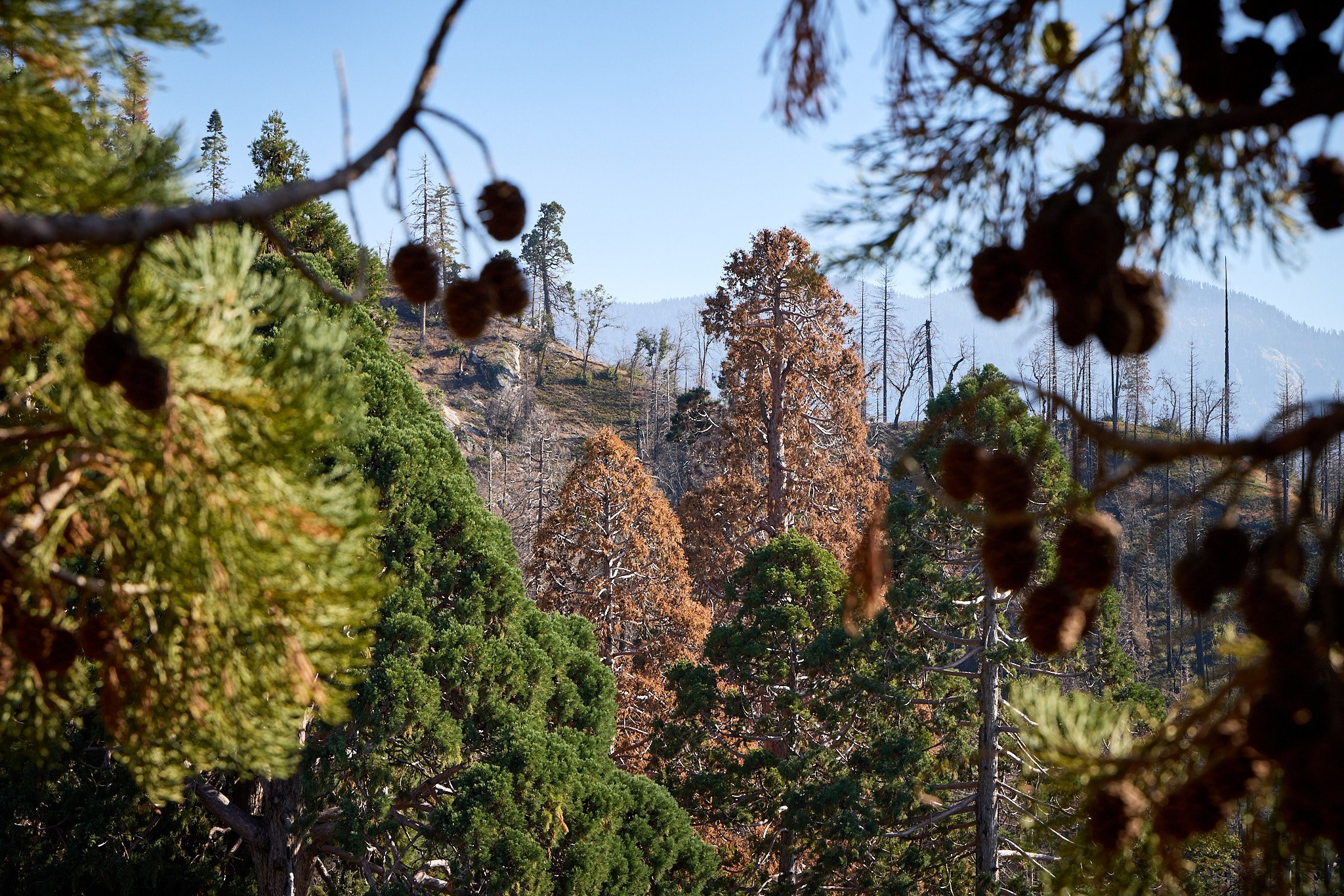
Bark Beetle Study
This study examines the impact of bark beetle attack on giant sequoia health.
Giant sequoias are among the oldest trees on the planet, sometimes living more than 3,000 years. This longevity is a testament to their incredible resilience to drought, fire, diseases and pests. But in the past decade, a small number of giant sequoias have died from a combination of drought, fire damage, and bark beetle attack. Once thought to be practically invincible to insects, giant sequoias are now facing a new threat.
Over the past several years, native bark beetles may have played a role in the recent death of dozens of mature sequoia trees weakened by fire and drought. These giant sequoia bark beetles typically attack giant sequoia branches that have fallen to the forest floor. Until recently, they were not thought to attack living trees.
Not enough is known about how the beetles are impacting giant sequoia health and how the trees are defending themselves. Our collaborative team, Ancient Forest Society (AFS) and the Davis Lab at Colorado State University (CSU), seeks to shed light on this critical threat to giant sequoias through our two-year study Examining Bark Beetle Attack in Giant Sequoia. This CAL FIRE Forest Health Research Program funded study is taking place in five locations: Calaveras Big Trees State Park, Yosemite National Park, Sequoia National Park, Mountain Home Demonstration State Forest and the Tule River Reservation.
The study is building on important research, led by Nathaniel Foote at CSU that provided critical insights about giant sequoia bark beetle ecology and distribution, including key details about the taxonomy and life history that are important for management. Our team has also been involved in studying this issue with scientists from the USGS, including Nathan Stephenson.
The primary goal of this project is to investigate fundamental interactions between giant sequoia bark beetle biology, tree ecophysiology, and defense against attack.
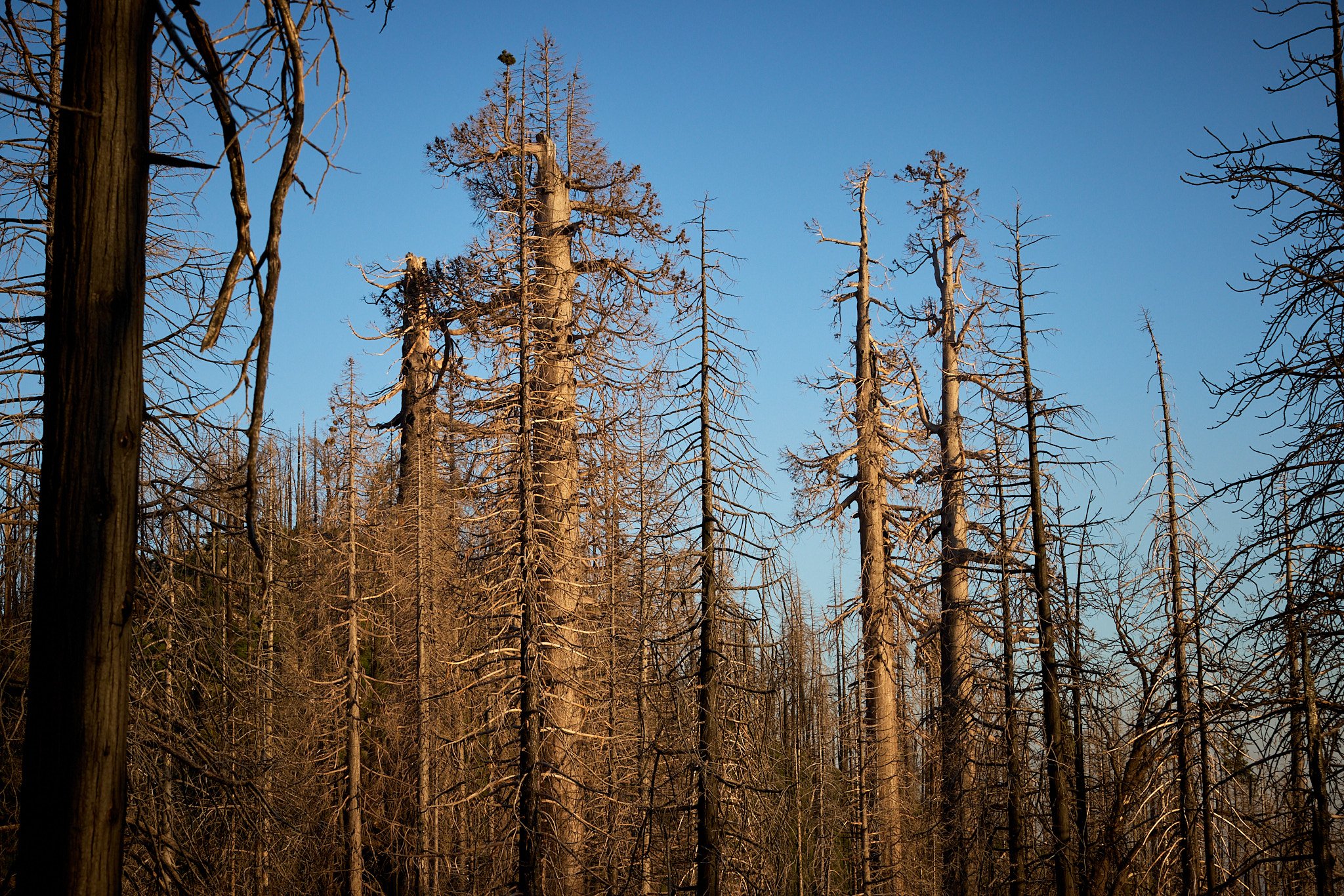
Study Questions
Where do giant sequoia bark beetles overwinter?
How does beetle attack impact tree carbon and water status?
How does tree physiology and defense affect beetle behavior and survival?
Methods
90 Study Trees
We are studying 90 giant sequoias throughout the Sierra Nevada in five different locations.
Tree Inspections
Each study tree is inspected twice a year during this two-year study. We quantify beetle activity and make detailed measurements on a subset of randomly selected branches. The branches collected for growth analyses will also be used to characterize bark beetle life stages.
Tree Growth
We are monitoring the growth of our study trees using dendrometers. We are also measuring growth in a subset of branches with beetle activity. Growth is an indicator of stress.
Sapflow and Water Status
At each study site, four trees are instrumented with treetop sapflow sensors to monitor water use. With the help of volunteers, our team climbs each study tree multiple times in the spring and fall to collect leaf samples for water status measurements. These measurements tell us how stressed the trees are.
Tree Defense
Samples are collected from randomly selected branches to analyze live bark and sapwood for defense chemicals and other traits that may help the trees fend off beetle attack. Our colleagues at CSU are taking the lead on this aspect of the study.
Drones
In locations where they are allowed, we are testing drones to see if they are able to remotely detect bark beetle activity in our study trees. Drones could be a cost-effective tool for detecting bark beetles across the landscape.
Soil and Climate
Soil conditions like water potential, water content and temperature are being monitored at the base of four study trees per site. Climatic conditions like temperature, humidity, and precipitation are being monitored at the treetop. These measurements help us characterize the environment each tree is growing in.
Entomology Experiments
The team at CSU are delving further into the biology of these beetles and tree defense mechanisms with experiments in the field and the lab.
Collaboration
This project is a collaboration with the Davis Lab at CSU. We aim to provide giant sequoia land managers with a better understanding of how concerned they should be about bark beetles and if there are tools they can use to monitor and control them.
Partners and Funders
